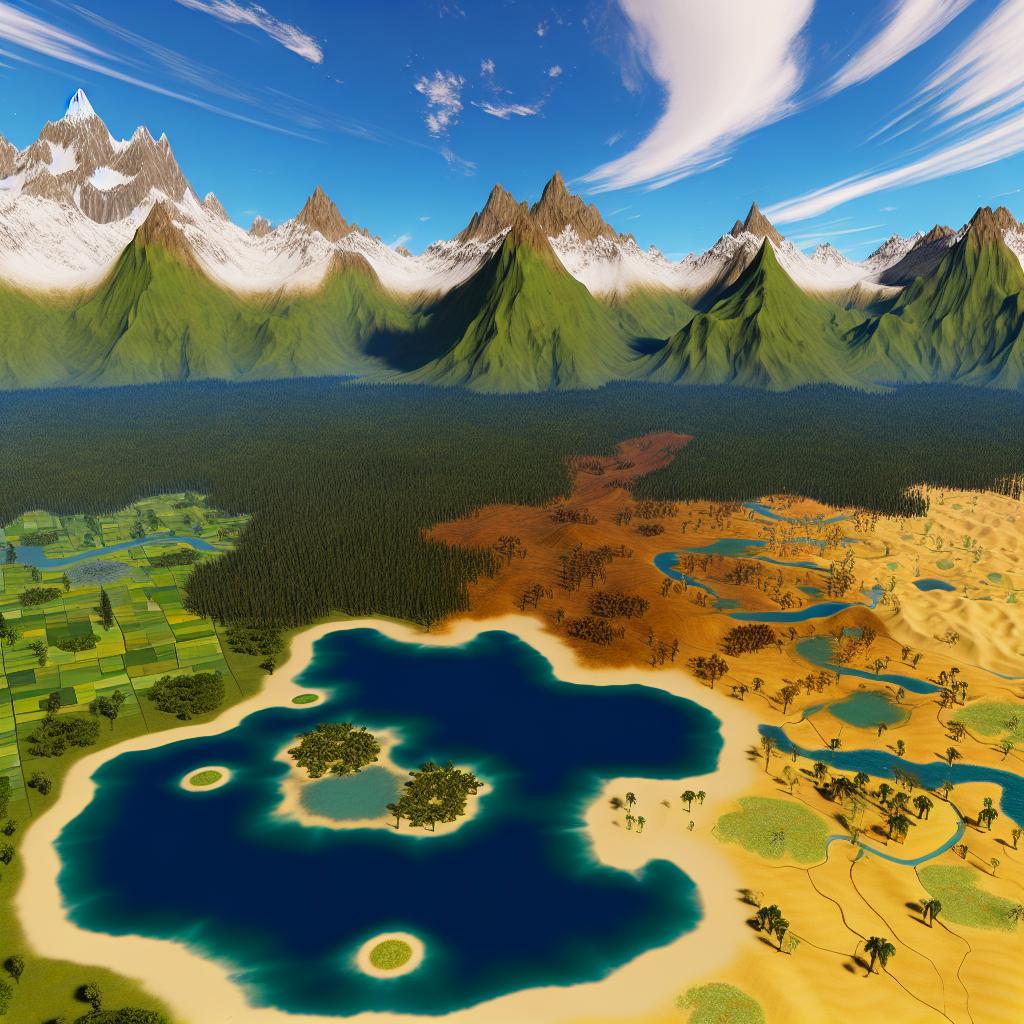The Importance of Geography in Fantasy Settings

The Role of Geography in Fantasy Settings
Fantasy literature often presents readers with richly detailed worlds that captivate and immerse them. The geography of these fantasy worlds plays a critical role in creating such an immersive experience. By shaping culture, history, and conflicts within a story, geography provides a backdrop that enhances the narrative, transforming it into something much more tangible and memorable.
Geography Defines Boundaries and Territories
In fantasy settings, geography frequently defines the boundaries of different realms or kingdoms. Natural features such as mountains, rivers, and seas serve as borders that can limit or facilitate interaction between societies. These geographical barriers not only influence political structures but also impact the movement and strategy of characters within the story. For example, a kingdom surrounded by high mountain ranges may develop in relative isolation, promoting a unique culture and set of beliefs distinct from neighboring regions. Alternatively, an open plain might encourage frequent interactions and conflicts with neighbors, fostering a diverse cultural tapestry.
Influence on Culture and Economy
The geographical features of a fantasy world profoundly impact the culture and economy of its inhabitants. Coastal regions might develop societies focused on maritime trade due to their proximity to the ocean, fostering unique skills, values, and social structures centered around the sea. Meanwhile, mountainous areas could be home to isolated communities with distinct cultural practices, shaped by the need for self-reliance and adaptation to challenging environments. In these regions, the availability of natural resources like fertile land or minerals further shapes economic activities and social hierarchies. Trade routes often follow geographical features, linking distant regions and facilitating the exchange of goods, ideas, and cultural influences.
Climate and Environmental Conditions
Climate is another crucial component impacted by geography, dictating agricultural practices, technological advancements, and social customs. For instance, a region with harsh winters might develop a tradition of seasonal celebrations to combat the cold, fostering a sense of community and resilience among its inhabitants. In stark contrast, arid desert landscapes give rise to nomadic lifestyles, with societies developing specialized knowledge and skills to thrive in extreme conditions. These environmental factors add depth to the world-building in fantasy settings, creating diverse and dynamic environments that enrich the reader’s experience. Each climatic zone brings its own challenges and opportunities, influencing the evolution of societies and their interactions with others.
The Impact on Storytelling
Geographical elements set the stage and drive the narrative in fantasy stories. The challenges posed by the environment often serve as plot points or obstacles for characters to overcome. Characters might find themselves crossing a treacherous mountain range, navigating a vast desert, or traversing dense forests, with each journey acting as a test of endurance, ingenuity, and perseverance. Such journeys not only provide thrilling narratives but also facilitate character development and interactions. The environment shapes the decisions, alliances, and conflicts that characters encounter, often mirroring or influencing internal struggles within the narrative.
Examples of Iconic Fantasy Geographies
Many renowned fantasy series use geography effectively to enhance their storytelling, creating richly detailed settings that become characters in their own right. J.R.R. Tolkien’s Middle-earth, for instance, features meticulously crafted maps that define the landscape’s influence on the story. The varied geography of Middle-earth, from the rolling hills of the Shire to the jagged peaks of the Misty Mountains, not only provides a visually stunning backdrop but also introduces a range of challenges and cultural nuances that enrich the narrative. Similarly, George R.R. Martin’s Westeros uses varied climates and terrains to reflect the political and cultural complexities of its world. The icy tundra of the North, the lush forests of the Riverlands, and the arid deserts of Dorne each host distinct cultures, traditions, and political dynamics, underscoring how geography can become a vital storytelling tool.
Conclusion
Understanding the importance of geography in fantasy settings can enhance the appreciation of these imaginative worlds. It is an integral part of world-building that influences the narrative, characters, and cultures within a story. By considering geographical features, authors create a more immersive and believable fantasy world, enriching the reader’s experience. Geography encourages exploration and discovery, prompting readers and characters alike to traverse new landscapes and engage with unfamiliar cultures. In essence, geography is the canvas upon which the stories unfold, a fundamental element that brings richness and depth to fantasy literature, making it a field ripe for exploration and appreciation. For further reading on world-building in fantasy literature, consider exploring resources such as [publication name] or [author name].
Comments are closed.
Comments on 'The Importance of Geography in Fantasy Settings' (0)
Comments Feed